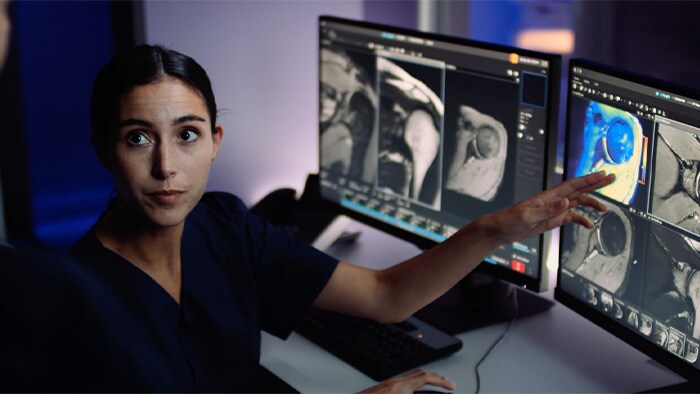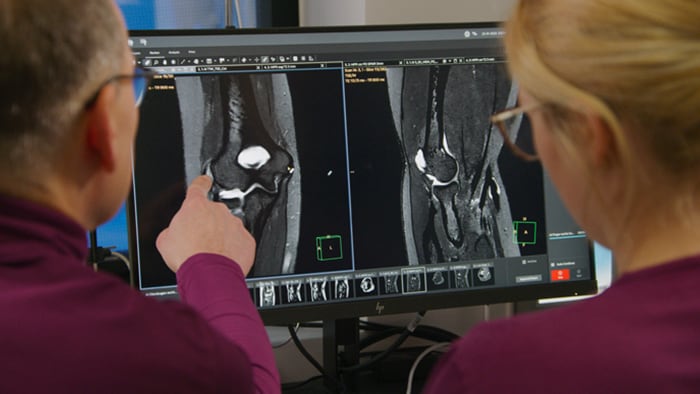October 2023 - Philips Fieldstrength MRI article
Efficient MR workflow at FUESMEN with help of MR Workspace
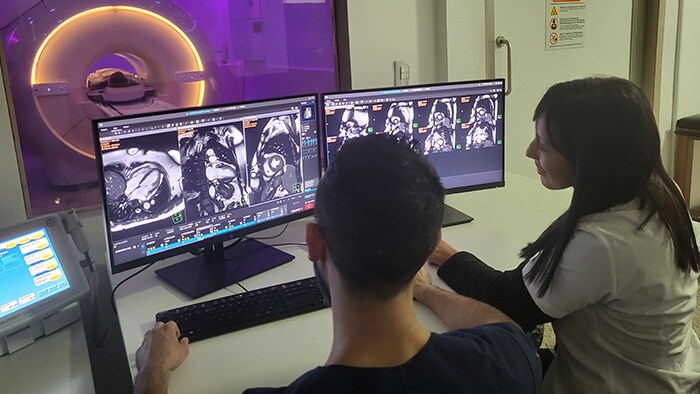
Offering a 24/7 MRI service with long shifts and a large share of complex cases, FUESMEN staff members quickly recognized the benefits of MR Workspace. They appreciate the time-saving features and value the two large screens. Thanks to the ease of use, training times at FUESMEN are reduced. It helped technologists and radiologists improve their efficiency, benefiting the department as a whole.

MR Workspace helps save a lot of time in the daily MR schedule and also allows us to spend less time in front of the console.
Dr. Maximiliano Noceti, radiologist at FUESMEN
Dual monitor benefits both clinicians and technologists
When MR Workspace was installed at FUESMEN (Fundación Escuela Medicina Nuclear, Mendoza, Argentina) to replace their Ingenia’s previous operator’s console, the MRI technologists quickly adapted, discovering its many benefits. It facilitates various MR exam steps, including preparing exams in advance, selecting the right protocol, planning sequences, viewing and post-processing. The FUESMEN team is driving productivity, quality and predictability in image acquisition and diagnosis, MRI technologist Bruno Javier Lima says: “The dual monitor setup is what impressed me most. It helps me streamline the workflow by processing an exam on one monitor, while simultaneously using the other monitor to set up the exam of the patient in the scanner.” “This relieves me of much of the daily stress," he adds. “Before, if a cardiologist or radiologist needed to see or post-process something on the console, we had to give them the mouse and the monitor. Now, I can still watch the setup on one monitor when I leave the mouse and the other monitor to the doctor who wants to review or process the images.” According to FUESMEN radiologist Maximiliano Noceti, the dual-monitor configuration makes it easier for radiologists to guide examinations. “I am more often present with less experienced technologists who might not be as well versed with the anatomy I am studying,” he says. “For instance, in oncological pelvis and gynecological studies that need to be well-directed toward the pathology, I can help the technologist plan the high-resolution sequences so that these studies are successful. This helps save a lot of time in the daily MR schedule and also allows us to spend less time in front of the console and continue with our daily tasks.”
and feels that MR Workspace features are helping them.
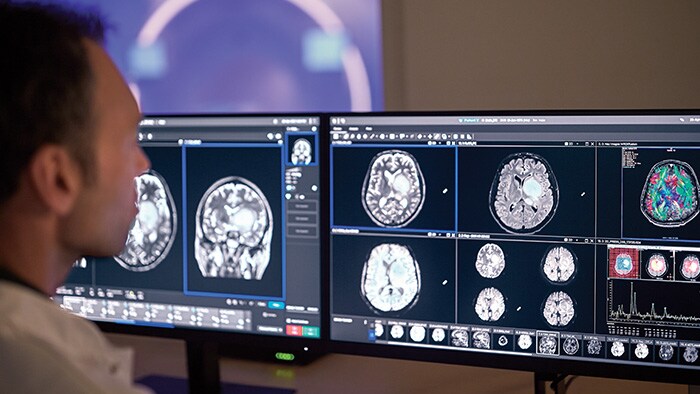
Scan planning made easy
MR Workspace is designed to simplify image acquisition by limiting the number of interactions users have with the interface. “In brain studies, for example, the scans are positioned and angulated automatically, because through AI [1] the system recognizes the structures,” Dr. Noceti says. “We have seen the benefits of this, for example, when new technologists working on the weekends make very few mistakes. As a radiologist with no official training on MR Workspace, I found the interface easy to use and I became accustomed to it very quickly.” This is an improvement over the previous interface, especially for newer team members, according to Dr. Noceti, who has observed that technologists rapidly learn how to use MR Workspace and can begin contributing their skills in the department quickly. “I think speed is the main benefit that MR Workspace has given us,” Mr. Lima adds. “Setting up has become much more enjoyable, having it on the large monitor with the three very large quadrants for planning.”
I think speed is the main benefit that MR Workspace has given us. Setting up has become much more enjoyable, having it on the large monitor with the three very large quadrants for planning.
Bruno Lima, MRI technologist at FUESMEN
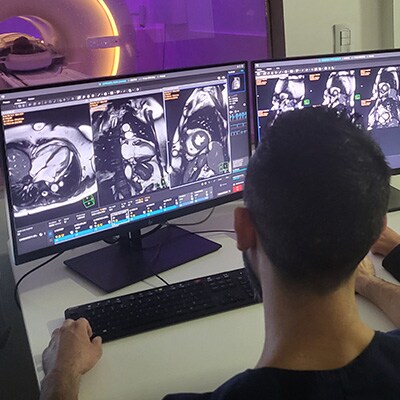
Fast and easy post-processing
The MR Workspace has proven agile in processing and post-processing, according to Dr. Noceti. “What amazes me when using the post-processing packages for angiography and spectroscopy is how fast I have the processed images on the second screen,” he says. “I can visualize the active areas in the brain during live scanning. It almost feels like a live procedure. This was slower with the previous interface. Bottom line, the speed and post-processing are better and the advanced visualization tools are handier.” FUESMEN bioengineer and head of medical physics, Daniel Fino Villamil notes that: “When implementing a volumetric sequence with MR Workspace, I can very quickly change the processing of MIP/MPR. Other interfaces require multiple mouse clicks to obtain the same results.” He highlights the interface’s ease of use and says the advanced visualization toolkits are exceptional. “I can very easily compare the different sequences or create different maps, such as K-trans maps and those for diffusion and ADC quantification. In neuro studies, the tractography toolkit is very intuitive and gives me the ability to manipulate images in 3D – it’s fast and the interaction with the morphological sequences is rapid as well.” “With the perfusion and diffusion toolkits it’s very easy to copy the same region-of-interest in the various maps or to acquire a different geometry. In oncology and neuro studies, I like the correlation that I can perform with the volumetric sequences, functional imaging and tractography, and the diffusion and perfusion maps,“ Mr. Villamil adds.
Post-processing is faster. I can visualize the active areas in the brain during live scanning. It almost feels like a live procedure.
Dr. Maximiliano Noceti, radiologist at FUESMEN
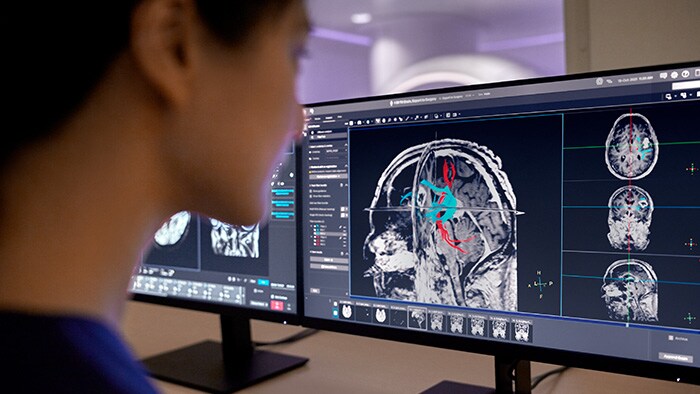
More patients per day with a new way of working

On several occasions, the concurrent post-processing has already shown me the relevant information, so that we could skip subsequent sequences, which shortens overall exam time.
Dr. Maximiliano Noceti, radiologist at FUESMEN
Dr. Noceti notes that being able to almost immediately view the images on the second monitor allows him to considerably reduce scan time in some cases. “On several occasions, the concurrent post-processing has already shown me the relevant information, so that we could skip subsequent sequences,” he says. “Suspending the exam in this way shortens overall exam time, particularly for complex studies.” Dr. Noceti says MR Workspace has allowed them to elevate their use of the Ingenia MR system by scanning more patients than they were able to do before, in a way they wouldn’t do with the hospital’s other MR systems. “Since we can save a lot of time between patients, there have been days that we can examine four or five additional patients on top of the usual patient volume. For example, on one day we were able to process 17 patients in a six-hour shift,” he says.
Since we can save a lot of time between patients, there have been days that we can examine four or five additional patients on top of the usual patient volume.
Dr. Maximiliano Noceti, radiologist at FUESMEN
Streamlining the schedule with MR Day Manager
MR Day Manager allows technologists to see the patient schedule on their MR Workspace monitor and indicates which patients have arrived. Patient and schedule data from the RIS can be integrated in MR Day Manager and made accessible on the monitor via a single mouse click. Before patient arrival the technologist can already assign ExamCards and prepare for special situations by entering MR Conditional implant information, pregnancy status and other information. This helps save time when the patient arrives. “With MR Day Manager, two or three upcoming studies already are uploaded and ready to go,” Dr. Noceti says. “If the patient is in the dressing room on time, the technologist workflow is not interrupted. When we can save five minutes per patient, at the end of the day that adds up to impressive time-savings.” FUESMEN technologists appreciate the ability to enter the patient’s weight and height and even select protocols for successive patients in the queue. “During my normal routine, the ability to load patient data with MR Day Manager makes the workflow much more streamlined,” says technologist Verónica Natalia Romero. Mr. Lima explains: “If I see four patients on the schedule that have already arrived, I can go ahead and preload them. So, when the patient is being positioned in the scanner, I already have all safety data and I even have the protocol I will use. That’s a big advantage.”
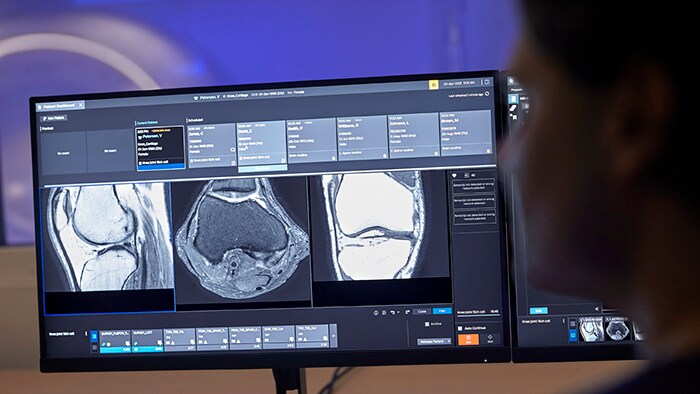
High quality screens assist FUESMEN physicians in diagnosing
According to FUESMEN staff, the two 27-inch monitors also stand out because of their size, the 4K HD resolution and deep dark screens. “The large monitors and the resolution they provide are fantastic,” Dr. Noceti says. “The MR Workspace screens are also darker than the previous interface, which is friendlier to my eyes after a long shift.” In prostate studies with small pathology, Dr. Noceti appreciates the screen quality and high resolution. “The better the resolution and contrast on the monitors, the easier it is for us to see that small black region of pathology,” he says. “Studies employing the microscopy coil are another example where I can appreciate that the resolution is now better.” “I feel that the large screens help me reduce the visual fatigue that I sometimes experience,” Mr. Lima adds. “The matte black color of the monitors, combined with the monitors’ size, helps me to not focus so intently on the structure to get the slice just where I want it to pass, which is an improvement over the smaller single monitor we had before. It helps me ease some daily stress. The bottom line is that the MR Workspace screens are more user-friendly for us as technologists.”
Mr. Lima adds: “The contrast resolution on those monitors looks great, they are amazing for many high-resolution sequences. Our microscopy coil sequences have very fine slice thickness and voxels of 0.2 or 0.1 millimeters – seeing that high resolution on those monitors is spectacular.”
Mr. Villamil cites the utility of the monitors for confirming details that may be missed on standard screens and for conducting quality assurance. “When I check images on my home computer, I sometimes can’t see a lesion that I had seen on the MR Workspace monitor, so for pathology it’s a spectacular interface,” he says. “And for quality assurance and quality control, I think it’s very easy to check the spatial resolution on the second screen. On some monitors you may think the spatial resolution is good, until you see that same image on MR Workspace.”
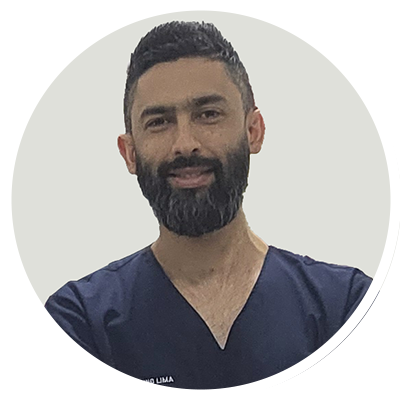
The bottom line is that the MR Workspace screens are more user-friendly for us as technologists.
Bruno Lima, MRI technologist at FUESMEN
Easy to learn and use
Learning how to use MR Workspace is straightforward. “It is much easier to learn and use because it is more intuitive,” Mr. Lima says. “MR Workspace does not show the large range of parameters to manipulate but provides only the basic parameters in a section at the bottom. Technologists who only occasionally operate the Philips MR system can feel more relaxed thanks to this.” As experienced MR technologists, Mr. Lima and Mrs. Romero both began using the interface immediately, requiring only a general introduction. They familiarized themselves with the concepts promptly. However, even for imaging technologists with little MRI experience, learning MR Workspace has been simple. FUESMEN runs MR courses and technologists who have never done MRI are often rotated through the MR department. Mr. Lima says: “I had taught one of these students how to do a spine study and after only three days I left him alone with MR Workspace. He described it as a very intuitive, useful platform. It doesn’t take weeks or months to train technologists on it.”
It is much easier to learn and use because it is more intuitive.
Bruno Lima, MRI technologist at FUESMEN
Technologist training days reduced at FUESMEN
Imaging professionals ramp up quickly with MR Workspace. In a study, Daniel Fino Villamil and his team of biomedical engineers compared training differences between the previous Ingenia user interface and MR Workspace. The study involved 20 individuals from the MRI service, 10 of whom were inexperienced or experienced MR technologists. The researchers found that it took fewer days to train both experienced and inexperienced technologists on Release 10 versus Release 5.
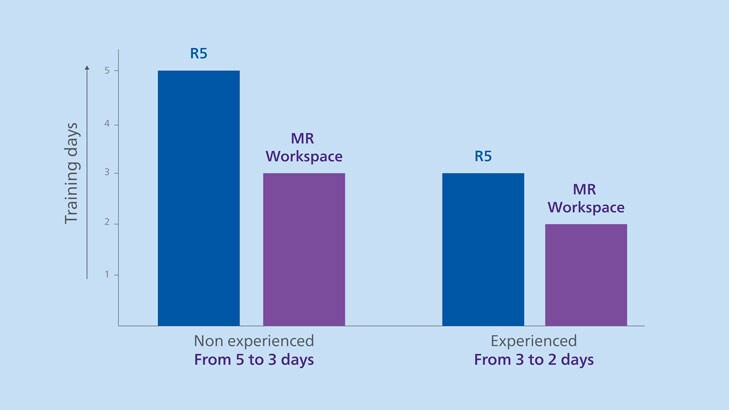
Switching from the previous MR user interface to MR Workspace reduced training times from 5 days to 3 days (-40%) for inexperienced technologists and from 3 days to 2 days (- 33%) for experienced technologists.
Value added for the MR service
Driving an efficient high-quality service, the FUESMEN MRI team is unanimous in their satisfaction with MR Workspace supporting their service. “On a day-to-day basis, when doing an exam, it is much more streamlined,” Mrs. Romero says. Regarding productivity, Dr. Noceti says: “I can confirm that even on days when we had to overload the system with more patients than originally planned, our quality has not been negatively impacted. In addition, when we can skip unneeded sequences – because I’ve already seen in post-processing that we acquired the necessary images for diagnosis – our efficiency increases without compromising study quality.” Dr. Noceti also values the ease of use and short training time. “In general, MR technologists are hard to find and train and there is a lot of turnover. So, for a technologist to be trained and ramped up to competency quickly is a very important factor,” he says. When asked if he would like a solution such as MR Workspace to be available for all of FUESMEN’s MRI systems, Dr. Noceti firmly states: “Yes, without a doubt!”

Maximiliano Noceti, MD Radiologist and coordinator of MR Services at FUESMEN, where he has worked since 2009. He has 15 years of experience in MRI and specializes in medical research.
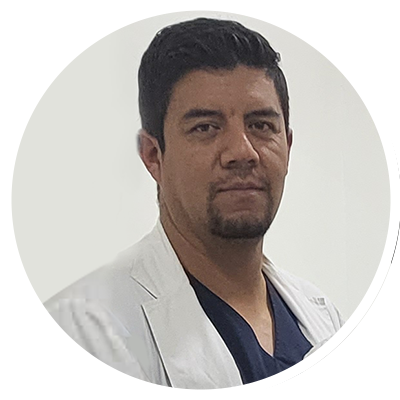
Daniel Fino Villamil Physicist and leading the MR technologists and MR projects at FUESMEN where he has worked since 2008. He oversees quality control for the radiology department’s CT and MRI services and conducts MRI research.

Bruno Javier Lima Has a degree in bioimaging and a broad experience in MRI gained during more than 15 years of working as a technologist at FUESMEN.
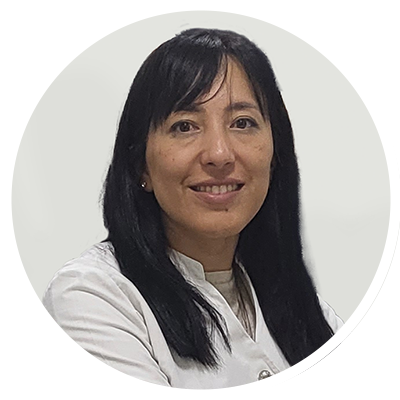
Verónica Natalia Romero MR technologist at FUESMEN for 15 years, the last 10 of which she has been involved with MRI and CT.
[1] According to the definition of AI from the EU High-Level Expert Group. Results from case studies are not predictive of results in other cases. Results in other cases may vary.
Share this article
Register for FieldStrength newsletter Our periodic FieldStrength MRI newsletter provides you articles on user experiences and best practices. Subscribe now to receive our free FieldStrength MRI newsletter via e-mail.
